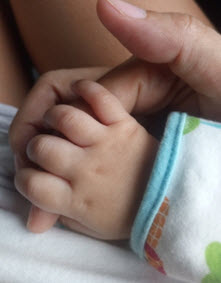This labor-assistance drug is one of the most essential medicines in the world, according to the World Health Organization. Indeed, almost ever since its introduction in the 1950s, “pit” has been the go-to drug for doctors and hospitals throughout the world when they want or need to jumpstart labor in a pregnant mother.
Pit has not changed much since the I Love Lucy days, but the drug’s use has changed a lot. Back then, doctors mostly used pitocin to reinvigorate stalled labor. But today, most doctors use pit to induce labor in a mother whose body is not yet ready to deliver. In these scheduled inductions, everyone is in a hurry, so the medical staff often uses dangerously high pit levels to push the mother’s body into labor. That use sets the stage for a medical malpractice claim, as outlined below.
Pitocin and HIE in Florida
Hypoxic Ischemic Encephalopathy often sets in if labor contractions are not at least two minutes apart. The placenta gets no blood or oxygen during contractions, so there must be long rest breaks between episodes. If pitocin levels are too high, the contractions are too close together. The placenta cannot give enough nutrients to the baby during the critical last few minutes before delivery.
Hypoxia (lack of oxygen) often results in brain damage. In less than five minutes, the baby’s oxygen-starved brain begins shutting down bodily functions to conserve this resource. The extremities are usually the first to lose function, followed closely by more vital organs.
Dealing with Brain Injuries in Florida Children
Delivery rooms are often bee hives of activity, so it is difficult for parents to tell whether or not things are going well, especially since most people count on their doctors for almost all medical information. As a result, many parents in Florida do not know that their child sustained brain damage during delivery. So, it’s important to look for the signs, including:
- Developmental Delay: A minor variation is probably not significant, but a major delay or a series of delays may be problematic, especially if the doctor appears defensive.
- Muscle Tone: CP infants often exhibit either hypotonia (excessively limp muscles) in the extremities and/or hypertonia (unusually tense muscles) in their trunks or abdomens. In other words, these babies don’t feel right when picked up.
- Balance: As CP babies get a little older, they often cannot sit up without using their arms for support. If that happens more than once, ask your doctor to apply the five-point Gross Motor Function Classification System test.
Cerebral palsy, like other brain injuries, varies significantly among different victims. Some CP children function just fine other than needing help with some daily activities, such as unscrewing a tube of toothpaste or feeding themselves. Others have such severe CP that they are essentially prisoners in their own nonfunctional bodies; the condition is often fatal in these cases. Many other victims are somewhere in between.
The good news is that CP is not degenerative, so it usually does not get worse. So, the more medical care and physical therapy these victims receive, the more their health will improve.
Connect with Experienced Attorneys
A few moments of carelessness during delivery often leads to a lifetime of suffering for victims and families. For a free consultation with an experienced personal injury lawyer in Brandon, contact Reed & Reed. We have four area offices (St. Petersburg, Lakeland, Tampa, and Clearwater).
Resource:
apps.who.int/iris/bitstream/10665/93142/1/EML_18_eng.pdf?ua=1

